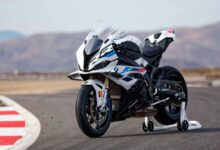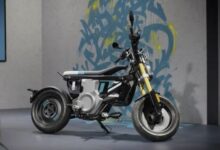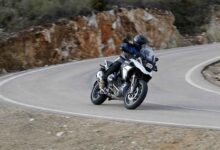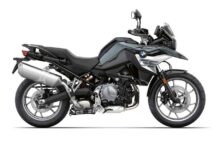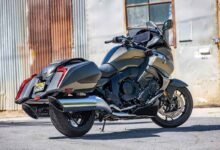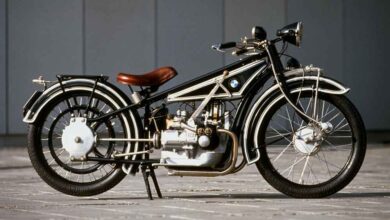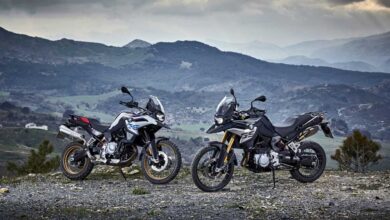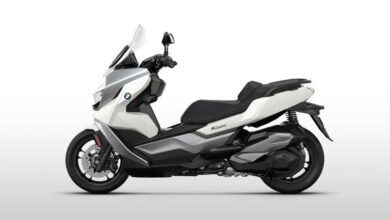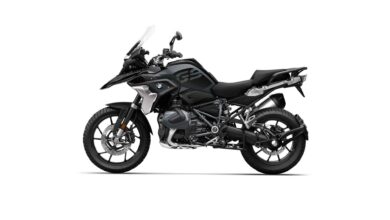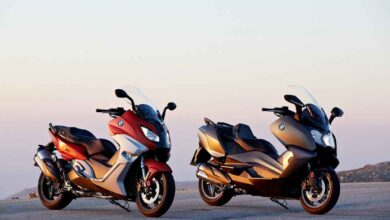Unleashing the Power: A Comprehensive Review of the BMW M1000R 2023
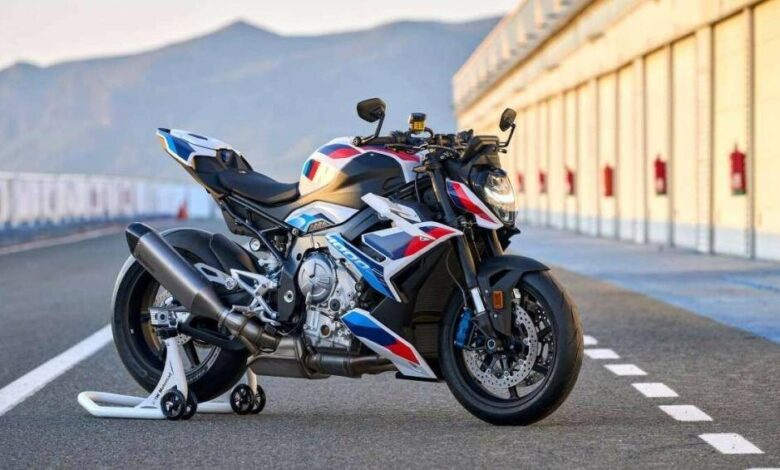
Welcome to our blog post, where we dive deep into the exhilarating world of the BMW M1000R 2023. As an expert in the field of automotive content writing, I am excited to share with you an in-depth review of this high-performance motorcycle. The BMW M1000R has been eagerly anticipated by motorcycle enthusiasts worldwide, and in this article, we will explore its features, performance, design, and more. So, fasten your seatbelts (or rather, your helmets) as we embark on this thrilling ride!
Contents
- 1 Overview of the BMW M1000R 2023
- 2 Performance and Powertrain of the BMW M1000R 2023
- 3 Design and Aerodynamics of the BMW M1000R 2023
- 4 Chassis and Suspension of the BMW M1000R 2023
- 5 Braking System of the BMW M1000R 2023
- 6 Technology and Electronics of the BMW M1000R 2023
- 7 Ergonomics and Comfort of the BMW M1000R 2023
- 8 Pricing and Availability of the BMW M1000R 2023
- 9 Verdict of the BMW M1000R 2023
Overview of the BMW M1000R 2023

The BMW M1000R 2023 is a superbike that pushes the boundaries of performance and engineering. It is the first M model motorcycle to be developed by BMW Motorrad, the German manufacturer renowned for its precision craftsmanship and cutting-edge technology. The M1000R is derived from the S1000RR model but incorporates several upgrades to enhance its performance and aesthetics.
The BMW S 1000 R is a fantastic motorcycle. I had the opportunity to test one for an entire year and I absolutely loved its versatility for everyday use, as well as its impressive performance on the track. However, when compared to the more powerful and technologically advanced competitors in the hyper naked category – the 200bhp beasts that are currently dominating the market – the S 1000 R seemed to fall slightly short, at least on paper. Both Ducati’s Streetfighter V4 and MV Brutale 1000RR are part of the 200bhp club, and Kawasaki’s supercharged Z H2 SE is just a few horses behind.
In the real world, where we actually ride, the fact that the S 1000 R produces a peak of 165bhp, which is 35bhp less than its rivals, hardly matters. However, sometimes it’s the numbers that count. That is why BMW has introduced their new M 1000 R, boasting an impressive 206.5bhp/154kw, making it the leader in its class. To achieve this, BMW has taken the new ShiftCam engine from the 2022 S 1000 RR superbike and fitted it into the naked chassis of the S 1000 R. The M 1000 R delivers the same power and torque, and even features the same gearbox. But BMW didn’t stop there. They have added aerodynamic wings to help reduce wheelies by providing 11kg of downforce at 220kph (137mph). The bike also benefits from improved brakes, which have been directly taken from the S 1000 RR. While the chassis dimensions remain unchanged, the standard electronic suspension (DDC Dynamic Damping Control) has been recalibrated to handle the additional 45bhp.
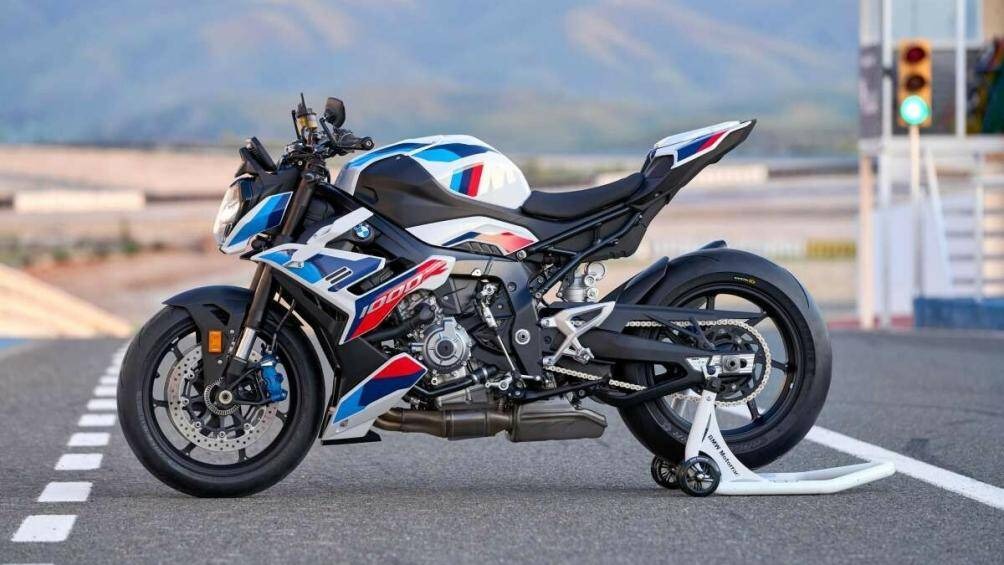
Additionally, a manually-adjustable steering damper has been introduced. The electronic rider aids have also received significant upgrades and recalibration to accommodate the enhanced engine and braking power, and they are now linked to a 6-axis IMU. One new feature exclusive to the M 1000 R and S 1000 RR is the Brake Slide Assist system, which allows for controlled drifting during corner entry before the lean-sensitive ABS takes over. Cruise control, heated grips, and an up-and-down quick shifter (Shift Assistant Pro) come as standard. We traveled to southern Spain to find out if the BMW M 1000 R lives up to its reputation.
Performance and Powertrain of the BMW M1000R 2023
At the heart of the BMW M1000R lies a mighty inline-four-cylinder engine that delivers exhilarating performance. This powerplant churns out an impressive 212 horsepower, making it one of the most powerful motorcycles in its class. With a redline at 15,100 rpm, the M1000R offers blistering acceleration and adrenaline-pumping speed.

To complement its powerful engine, the M1000R features advanced electronic aids such as traction control, multiple riding modes, and quick-shifting capabilities. These technologies ensure that the rider can harness the full potential of the motorcycle while maintaining optimal control and safety.
Transplanting the engine from the latest S 1000 RR into the M 1000 R means that it now has a peak power of 154kW (206.5hp, 210PS) at 13,750rpm, an increase from the standard S 1000 R which has a peak power of 121kW/162hp/165PS. The peak torque of the M 1000 R is 83.3lbft (113Nm) at 11,000rpm, slightly lower than the S 1000 R’s 84lbft (114Nm) at a lower 9250rpm, indicating the more aggressive nature of the new bike’s engine.
This desire for higher revs is made possible by the ShiftCam system, which has been a feature of the S 1000 RR superbike but was not used on the naked version before. This system switches the intake camshaft between two sets of lobes to adjust the valve timing and lift at high rpms. It’s worth noting that BMW hasn’t detuned or remapped the S 1000 RR motor for the M 1000 R. Typically, manufacturers will reduce the power of their sports bike engines before transplanting them into naked chassis.
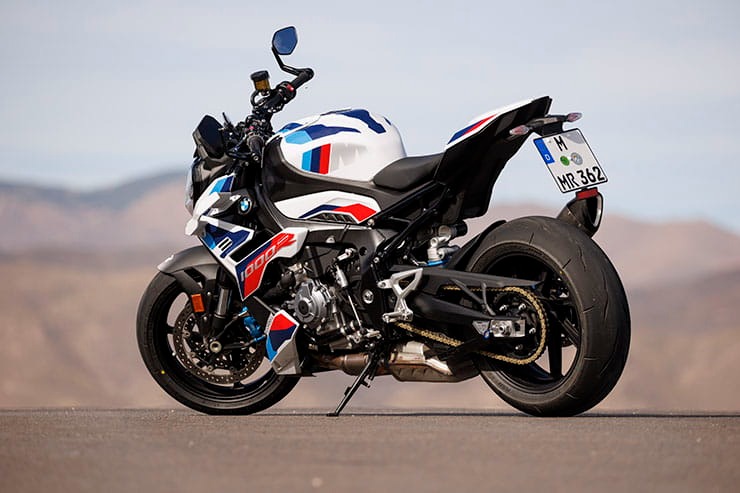
Additionally, the gearbox and internal ratios remain the same, with the only difference being the final gearing, which includes a slightly larger rear sprocket on the M 1000 R. Furthermore, the 4th, 5th, and 6th gear ratios of the M 1000 R are shorter compared to those of the S 1000 R, as they are the same as those on the new S 1000 RR.
See more: Unleashing the Power: A Review of the BMW S1000RR 2023
Design and Aerodynamics of the BMW M1000R 2023
The BMW M1000R boasts a striking design that exudes aggression and athleticism. Inspired by its racing heritage, this superbike features aerodynamic enhancements such as winglets on the front fairing. These winglets generate downforce, improving stability and grip at high speeds.
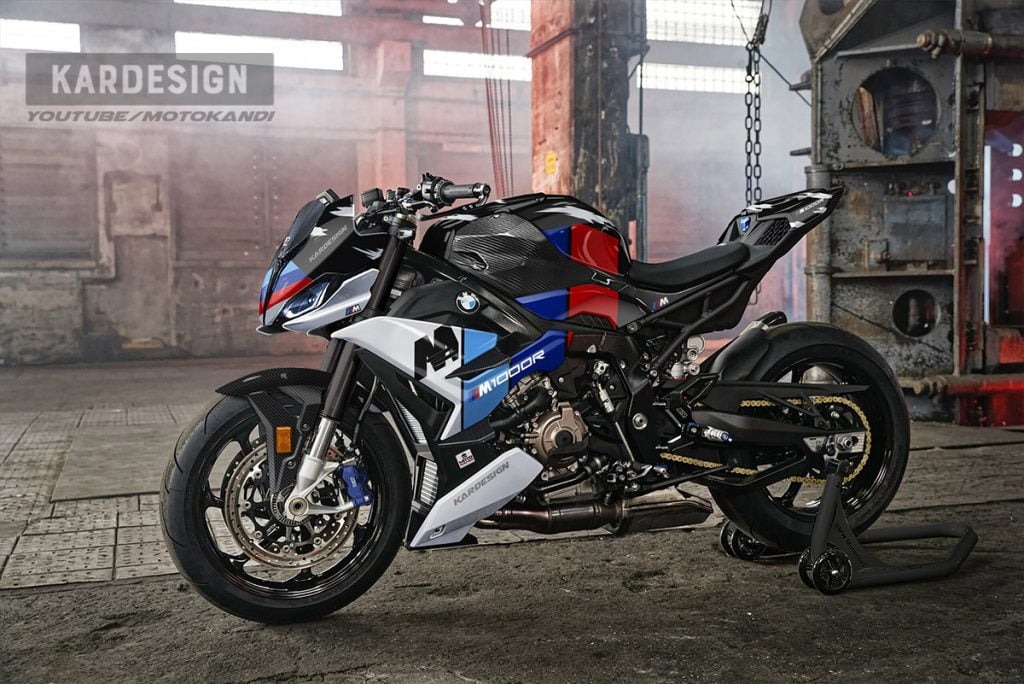
Furthermore, the M1000R showcases a sleek and streamlined silhouette, with sharp lines and bold angles that give it a dynamic appearance. The iconic M colors, blue and white, adorn the motorcycle’s bodywork, paying homage to its high-performance lineage.
The adaptable DDC suspension works wonders for the comfort of the M 1000 R. Unlike the S 1000 RR, which lends its engine to the naked bike, the M 1000 R has an upright stance that won’t leave you feeling like Quasimodo after a day of riding. The handlebars are slightly wider and more aggressive, but not excessively so. As mentioned before, the suspension can be softened on the move by switching to Road or Rain mode. However, even with the suspension adjustments, the seat is not the most luxurious, but it is comparable to other naked sports bikes in its class.
Despite its name, the “M Competition” version of the bike promises to be more comfortable. It features a wind deflector that improves airflow around your helmet and directs the blast away from your upper body. Additionally, it adds adjustable “M” footrests, allowing for a riding position that can be tailored to fit a wider range of body types and sizes compared to the standard bike.
Under WMTC standard testing conditions, the M 1000 R achieves a fuel economy rating of 6.4l/100km, which is equivalent to 44mpg. This is the same as the S 1000 RR, which shares its engine with the new bike, and only slightly worse than the S 1000 R, which manages 6.2l/100km (45.6mpg) in WMTC testing despite having 45hp less power. With a 16.5l tank, this means you should be able to cover a range of up to 160 miles between fill-ups if you ride carefully.
During the test, I managed to achieve a fuel economy of 6.5l/100km (43.4mpg), which is not far off from BMW’s claim. On an S 1000 R, I would typically get low 40s to nearly 50mpg on occasion, with the fuel light coming on slightly early at around 120-130 miles. Again, I would expect similar performance from the M 1000 R, which is impressive for a naked superbike.
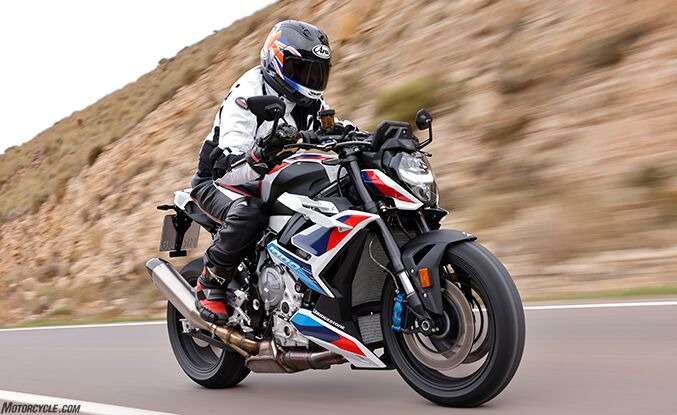
BMW hasn’t compromised on the standard bike’s usability. Cruise control is still included as standard, as are three-stage heated grips. The same informative 6.5-inch dash remains, with the BMW navigation wheel on the left side. If you’re not accustomed to BMWs, it may take some time to get used to the setup, but once you’re familiar with it, the amount of information available is almost endless. I particularly love the optional race dash, which clearly displays lean angle, brake pressure, and traction control intervention.
Chassis and Suspension of the BMW M1000R 2023
To ensure precise handling and optimal stability, the M1000R is equipped with a lightweight chassis constructed from aluminum. This design not only enhances the bike’s agility but also contributes to reducing overall weight.
The suspension system of the M1000R is top-notch, featuring fully adjustable front forks and rear monoshock. This setup allows riders to fine-tune the suspension to their preferences, providing a comfortable yet responsive riding experience.
Braking System of the BMW M1000R 2023
The braking system of the BMW M1000R is in line with its-performance nature. It is equipped with-of-the-line Brembo that provide exceptional stopping power. The front brakes feature twin rotors clamped by radial-mounted calipers, ensuring and consistent braking.
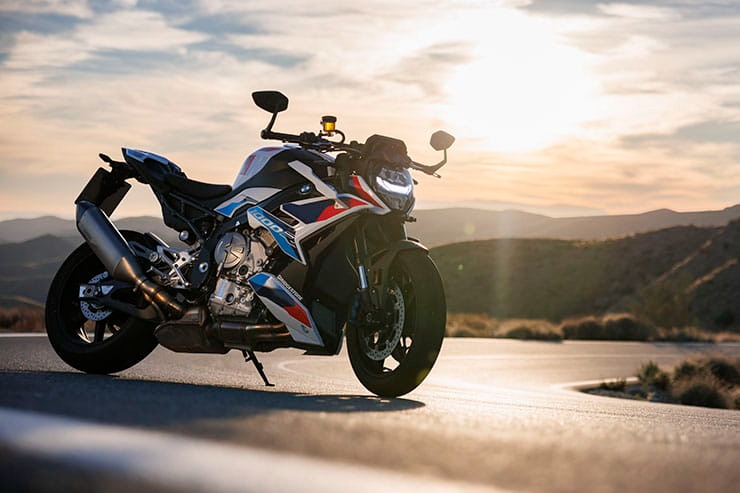
Additionally, the M1000R is equipped with advanced safety features such as cornering ABS (Anti-lock Braking System), which enhances braking stability while cornering. This technology adds an extra layer of confidence for riders pushing the bike to its limits.
The addition of ‘M’ brakes is one of the major upgrades that the M 1000 R receives compared to the lower-spec S model, which is logical considering its significant performance increase. The calipers now feature the ‘M’ versions that were initially introduced on the M 1000 RR. They are four-pot radials at the front, gripping 320mm discs that are 5mm thick and mounted on black anodised carriers.
Additionally, a radial master cylinder is utilized, and BMW will provide two brake pad compounds: one specifically designed for road use, and the other developed from the company’s experience in the World Endurance Championship, tailored towards track use. As expected, the brakes are integrated with BMW’s ABS Pro system, which functions effectively in corners thanks to a six-axis IMU. The system also offers various settings to cater to different riding modes. Similar to the latest S 1000 RR, the M 1000 R is equipped with a Brake Slide Assist system, active in ABS Pro setting ‘2’, that allows for a predetermined drift angle before the rear brake pressure begins to be limited by the anti-lock mechanism. Additionally, the engine braking control system is also involved in this process.
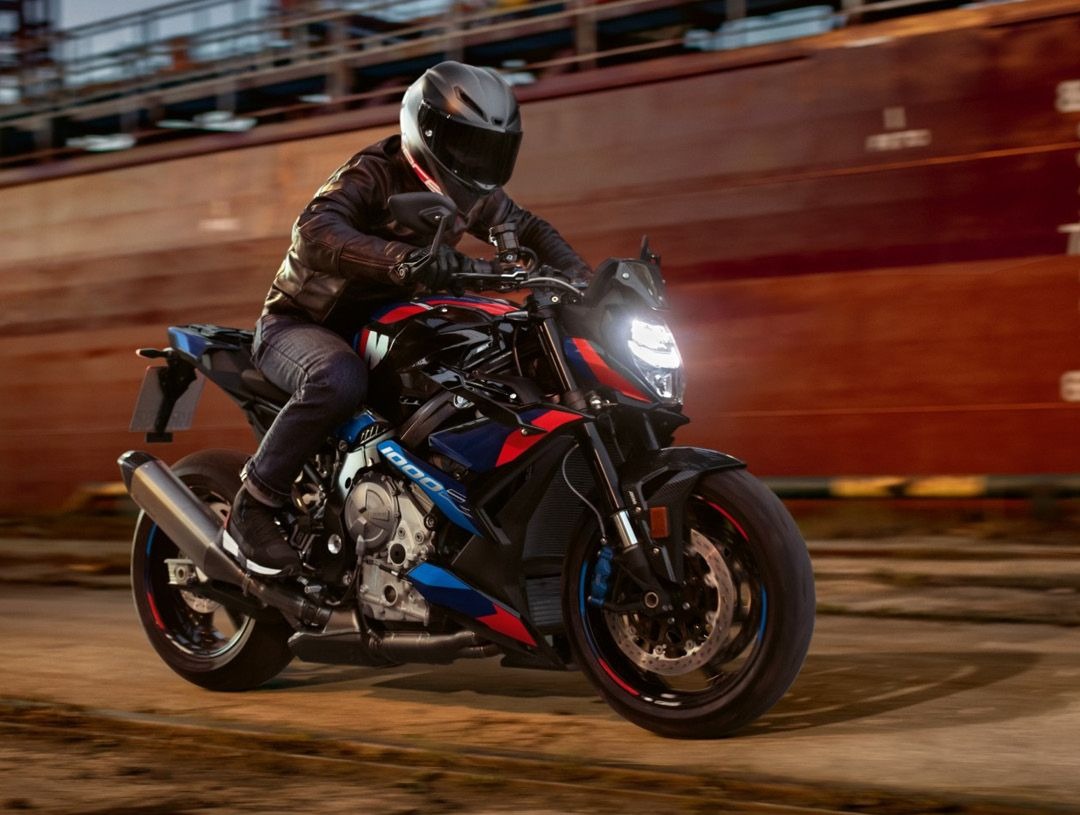
On both road and track, the brakes deliver a noticeable improvement over those of the standard bike, exhibiting phenomenal strength. On the road, only one finger is needed on the adjustable radial flip-up lever, which is designed to flip up rather than snap in a low-speed crash. The ABS has been recalibrated to accommodate the more powerful calipers, and the stability during high-speed braking has been further enhanced by the downforce generated by the new wings. Overall, the M 1000 R offers an exceptional braking experience and has the potential to be the best in its class.
Technology and Electronics of the BMW M1000R 2023
The BMW M1000R incorporates cutting-edge technology and electronics to enhance the overall riding experience. It features a full-color TFT display that provides riders with crucial information such as speed, gear position, fuel level, and more.
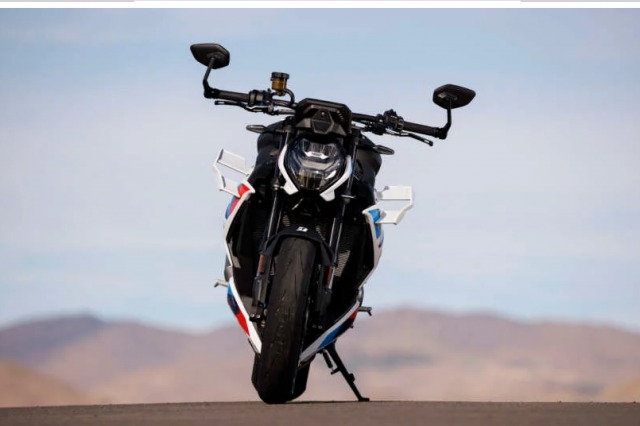
The motorcycle also comes equipped with BMW’s proprietary Connectivity system, allowing riders to connect their smartphones via Bluetooth. This feature enables access to music, calls, navigation, and other smartphone functionalities directly on the display, ensuring a seamless riding experience.
Ergonomics and Comfort of the BMW M1000R 2023
While the BMW M1000R is designed for performance, it doesn’t compromise on rider comfort. The ergonomics of the bike have been carefully engineered to provide a balanced riding position that promotes both control and comfort. The seat is well-padded and offers ample support for long rides.

Additionally, the handlebars are positioned in a way that reduces strain on the wrists and shoulders, allowing riders to maintain a relaxed posture even during spirited riding sessions. Overall, the M1000R strikes a perfect balance between performance-oriented ergonomics and rider comfort.
Pricing and Availability of the BMW M1000R 2023
As of now, BMW has not officially released pricing details for the M1000R 2023. However, based on its high-performance specifications and premium features, one can expect it to be priced competitively within its segment.
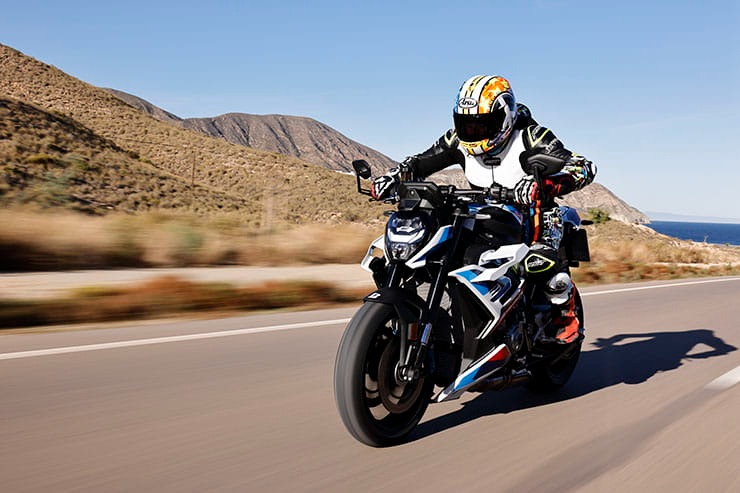
Regarding availability, BMW Motorrad plans to roll out the M1000R in select markets worldwide. Enthusiasts can reach out to their local BMW Motorrad dealerships for more information on availability and test rides.
What is the price of the new BMW M 1000 R? £19,480. I was expecting the new M 1000 R to be priced at over £20,000. Yes, £19,480 is still a lot of money, but you’re getting superbike power and a wide range of technology for under £20k. Ducati’s Streetfighter V4 S is £21,495, and compared to the MV’s Brutale at £28,895, the BMW seems like a good deal. The base S 1000 R starts at £12,520, but it has a lower specification and “manual” suspension. It’s easy to add extra features and push the price over £15,000.
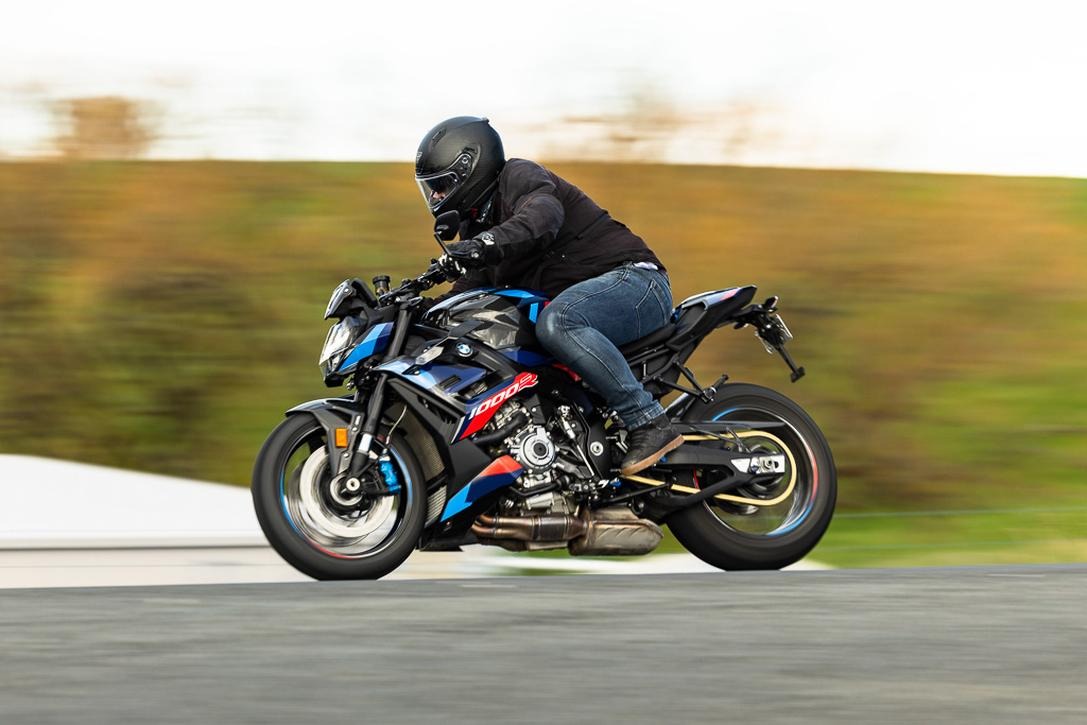
For comparison, the BMW S 1000 RR, which has the same engine but is obviously in a sports bike chassis, is £17,150. Higher up in the range, the M 1000 R with the M Competition Package (a standalone model despite its name sounding like an optional extra) is even more expensive due to specifications such as carbon wheels (£5,000). There are limited color options available, with the standard M 1000 R coming in non-metallic white with “M” graphics, and the M 1000 R M Competition version in “Blackstorm metallic” with “M” stripes. It will be available in stores in February, although PCP packages have yet to be confirmed.
Verdict of the BMW M1000R 2023
The BMW M1000R 2023 is a superbike that combines raw power with advanced technology and exquisite design. From its lightning-fast acceleration to its aerodynamic enhancements, every aspect of this motorcycle screams performance.
Whether you’re a seasoned rider or an adrenaline junkie looking for your next thrill, the M1000R is undoubtedly worth considering. Stay tuned for further updates on pricing and availability as BMW Motorrad continues to unleash this beast onto the roads.
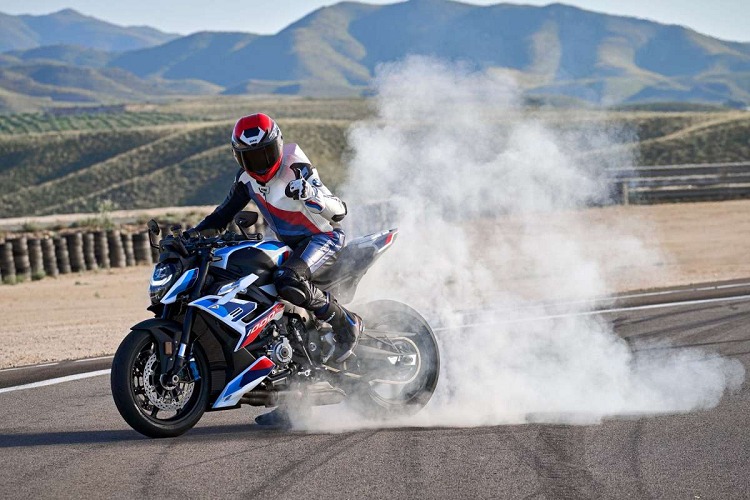
BMW already has an excellent naked bike in the S 1000 R. In many ways, they didn’t have to produce this 207bhp naked superbike, but thankfully they have.
On paper, at least, it offers market-leading power, while its electronic package of rider aids and riding modes is class-leading. Add lightweight handling and awesome braking power – not to mention the ‘M’ look and a high level of finish – and the pressure is suddenly on the competition. At under £20,000, it’s cheaper than the 200bhp Italian super nakeds, too.
I would want to change the M’s Bridgestone RS11 rubber for something more track-focused. And there’s a little bit of me that wonders if BMW could have done more! The M is so good, so usable, and so easy to ride that perhaps they could have gone even further – produced something a little more radical. It’s almost too good. I know that sounds mad.
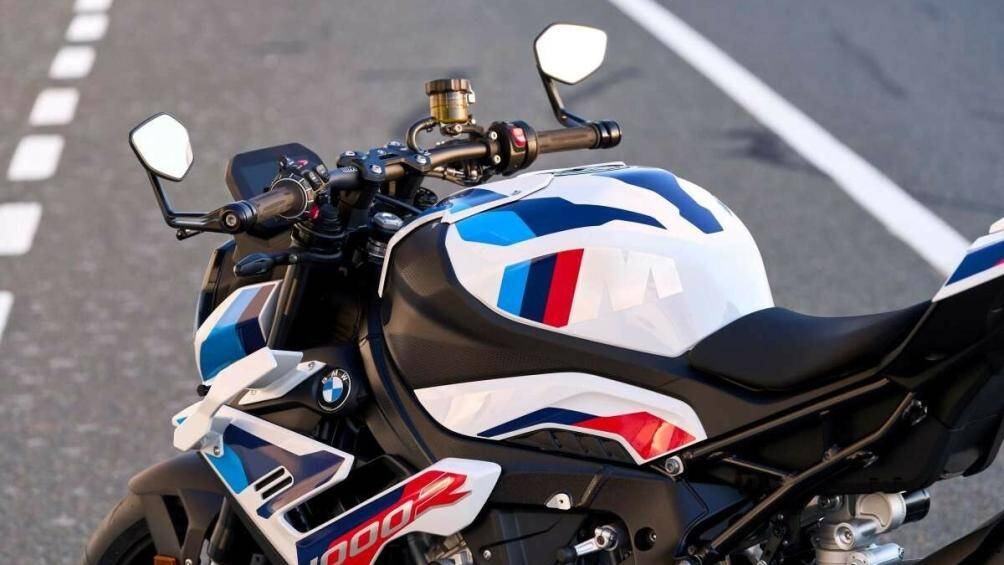
The big test will be when it goes up against the competition. I predict that it will be the easiest of the super nakeds to ride ‘normally’ and will cut on track. The standard S 1000 R was done on lap speed compared to the competition, but now I expect the BMW to be on top of the leaderboard – it will be close. But the BMW may not offer the character and desirability of the others. I can’t wait for the group test.
See more at: moto in world

